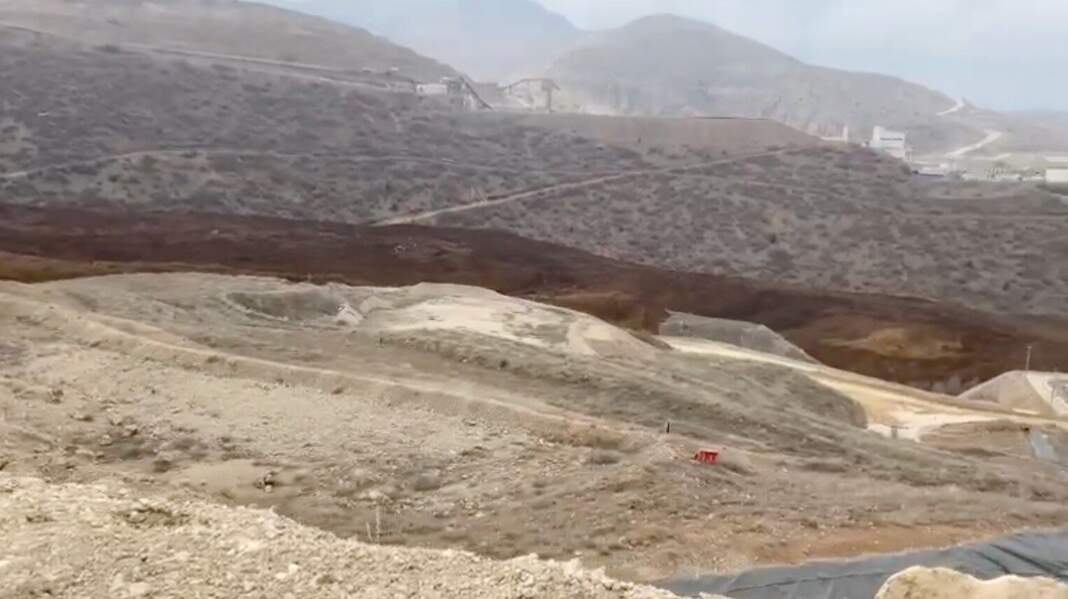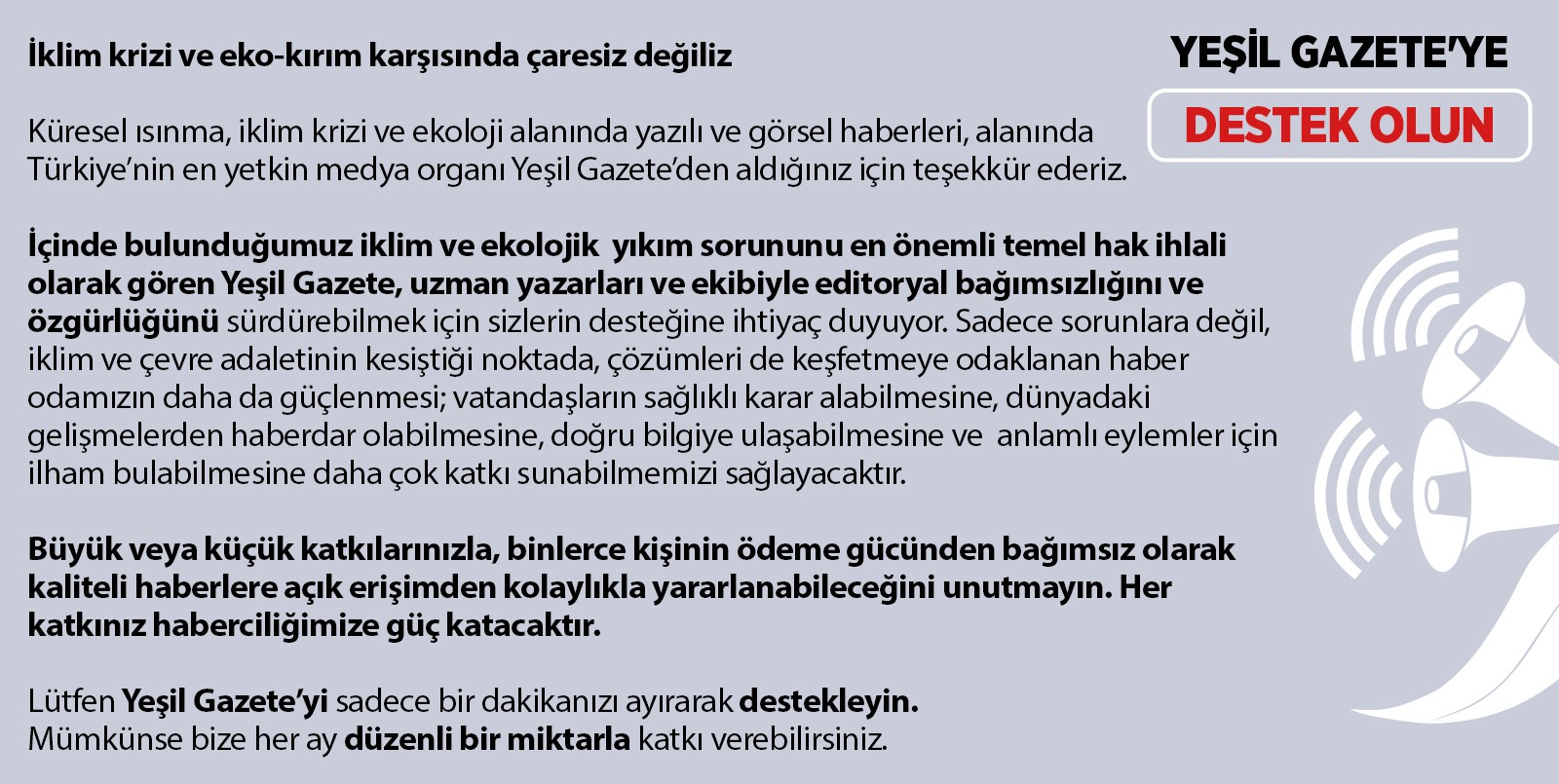A huge cyanide heap in the area where Anagold Madencilik Sanayi ve Ticaret A.Ş.’s Çöpler Gold Mine facility is located in the İliç district of Erzincan has collapsed.
In the mine where Anagold Madencilik Sanayi ve Ticaret A.Ş. has been producing gold since December 2010, mountains of cyanide and sulphuric acid collapsed with the incident that occurred around 14.30 yesterday. According to the first determinations, at least 9 labourers remained under the soil. Interior Minister Ali Yerlikaya said, “9 out of 667 workers cannot be reached, 400 people are being searched.”
While the teams started search and rescue operations in the region, Erzincan Governor Hamza Aydoğdu said that there are workers under the soil and it is not yet clear how many workers are under the soil. Erzincan Mayor Bekir Aksu also reported that there were at least 9 workers under the soil.
In the statement made by İliç Nature and Environment Platform, it was stated that the governor’s statement did not reflect the truth and that the incident occurred as a result of the explosion of a mountain of waste containing millions of tonnes of toxic waste. The following statements were made in the statement:
Today we faced the fact that the mountains of waste rock in İliç, which we have been saying for years, are in danger of collapse! The number of workers buried under millions of tonnes of toxic waste has not been announced yet! The governor of Erzincan is passing it off as a landslide, no, this is a landslide of a mountain of rust containing millions of tonnes of toxic waste! It is a landslide of millions of tonnes of toxic soil that will mix with groundwater!
There can be no mine in İliç, Anagold must be closed down immediately!
Sedat Cezayirlioğlu, a lawyer from İliç, who has repeatedly filed lawsuits against the mine, announced that a major disaster was taking place in the region and that millions of tonnes of cyanide-soil were heading towards the Euphrates River.
Erzincan İliç de dünyanın en büyük felaketi yaşanıyor, milyonlarca Ton SİYANÜRLÜ Toprak Fırat nehrine doğru gidiyor altında insanların var kepçeler kaldı altında pic.twitter.com/7iyD8u0yc3
— 🇹🇷Sedat CEZAYİRLİOĞLU (@sedat_czyrloglu) February 13, 2024
Lawyer Serdar Doğan stated that they had filed lawsuits several times before regarding the İliç mining site and said: “They did not take our lawsuits into consideration. This incident was inevitable. There were small-scale incidents related to this mining site before, but not of this magnitude. This mine site has to be closed. They are gambling with people’s lives.”
A worker at Anagold Maden told T24 that there are 400 workers on each shift, “We work three shifts here. There are 400 workers on each shift. When our shift was over, they said, ‘There is an incident’ and informed us around 13:30. There is a slip on the back side of the images. The soil you see is contaminated with cyanide. Because these soils are the stockpiles of the prospectors. Our friends who use lorries, dozers and diggers were working in that area. No one is allowed in the area. Only ambulances are travelling back and forth and there are Disaster and Emergency Management Presidency (AFAD) teams,” he said.
Minister of Justice Yılmaz Tunç stated that a judicial investigation was initiated by the İliç Chief Public Prosecutor’s Office and four prosecutors were assigned.
In the statement made by AFAD, “Today, around 14.00, a landslide occurred in a mine in İliç district of Erzincan province and it has been informed that there are citizens under the cave-in. Personnel from our provincial AFAD directorates of Erzincan, Erzurum, Sivas, Rize, Rize, Malatya, Giresun, Diyarbakır, Tokat and Tunceli were dispatched to the incident area. We are following the developments”.
The Ministry of Environment, Urbanisation and Climate Change also announced that the culvert gates were closed to prevent the flowing material from reaching the river.
Geçmiş olsun #Erzincan pic.twitter.com/Ej3wyANeGS
— T.C. Çevre, Şehircilik ve İklim Dğş. Bakanlığı (@csbgovtr) February 13, 2024
Licence controversy
Çöpler Gold Mine is operated by Anagold Mining, a US and Canadian company that has been fined for cyanide leaks. Anagold is 80 per cent owned by Alacer Gold, a Canadian gold mining company whose tax debt was previously cancelled, and 20 per cent by Lidya Mining, a subsidiary of the Çalık Group.
It was revealed in 2022 that the cyanide pipes used in the mine had burst. The mine, which was fined 16.4 million liras, started operating again after the necessary improvements were made.
The fact that Anagold’s tax debt had been cancelled was revealed in the balance sheet of the Canadian gold mining company SSR Mining, an 80 per cent shareholder of the company.
Çöpler, the second largest gold mine in Turkey, has been in operation since 2010.
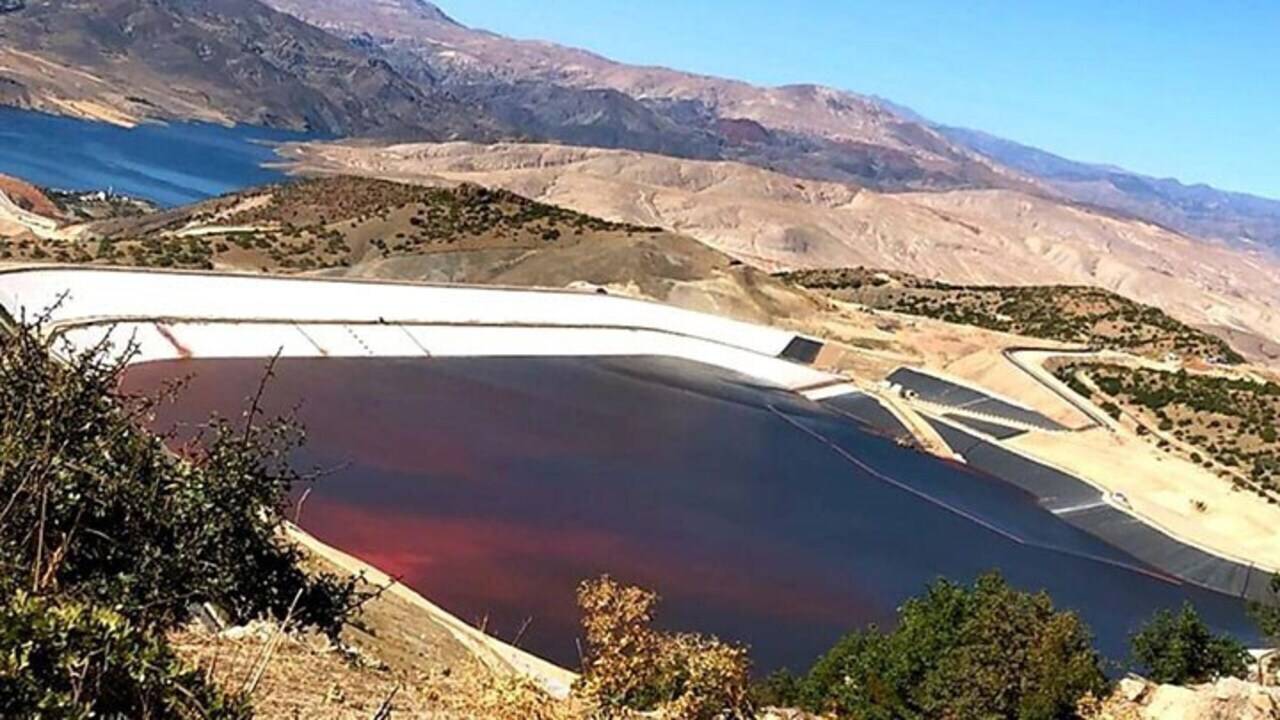
Anagold Mining made a statement that “we have activated our emergency plan”. In addition, in the statement, contrary to the governor, the company accepted that there was a slip in the heap leaching area and made the following statements:
“We would like to express our deep regret for the slide that occurred in our heap leach area at our Anagold Çöpler Gold Mine operation at around 14:28 on Tuesday, 13 February.
We would like to remind once again that our most important priority in this challenging process is the health and safety of our employees and contractors. Immediately after this unfortunate incident, we immediately contacted our employees in the region, activated our emergency plan and informed the relevant public institutions and organisations.
Immediately after the urgent notification to Anagold emergency response teams and AFAD units, necessary security measures were taken in the area where the incident occurred, and action was taken quickly for all interventions. As an organisation that puts employee health and safety at the centre of all its activities, we will act in unity and solidarity with both our employees and stakeholders in these difficult times.
While we continue to take all necessary steps to minimise the effects of this unfortunate incident, we will mobilise all our means for the immediate clarification of the incident. We respectfully announce to the public that we will keep the necessary authorities and the public informed about the developments within the scope of our transparency principle.”
What happened?
There was a cyanide leak in Erzincan on 21 June 2022. At the Anagold Gold Mine, a joint venture between Canada and Çalık Holding, a rupture occurred in a pipe containing cyanide solution and 20 tonnes of cyanide solution was dispersed in the region.
As previously reported by Yeşil Gazete, the Turkish Thoracic Society and the Turkish Medical Association had written reports on the area in question years ago, drawing attention to the dangers of cyanide leaching and calling for an immediate halt.
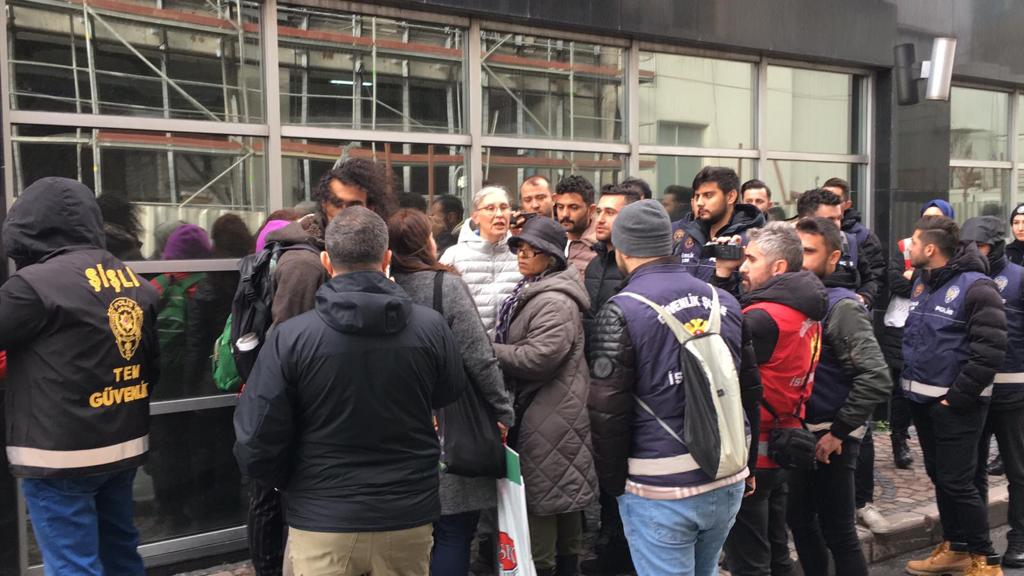
Erzincan is breathing cyanide
In 2010, gold production with cyanide was started at the mine, which started drilling in 2001. In 2019, sodium cyanide was increased to 11 thousand tonnes and sulfuric acid production to 122 thousand tonnes. In the report published in 2021, 18 hazardous substances were included. These include hazardous substances such as sodium cyanide, nitric acid, copper sulphate, sodium hydrosulphite, which cause severe burns, corrosive effects, skin and eye irritation to the respiratory tract and aquatic organisms.
‣Euphrates River will die if the gold mine increases its capacity
The first EIA studies for the Çöpler Complex Mine were conducted in 2007-2008 and the EIA report was given an “EIA Positive” decision on 16 April 2008.
Within the scope of the EIA Report issued for the mine in 2008, it was stated that 100 million tonnes of rock and 52 million tonnes of ore would be extracted during the activities planned to continue for 18 years. However, the figures increased over time. In the EIA report in 2014, the amount of rock was increased to 173 million tonnes. In 2021, the figures increased up to four times; the rock was increased to 420 million tonnes and ore to 85.3 million tonnes.
‘It must be strictly prohibited’
In the report published by Turkish Medical Association (TTB) on 25 May 2021, it was stated that “Cyanide mining activity consists of four main stages: Exploration, stripping and blasting, grinding and cyanidation, and storage of waste. All these stages of mining involve different threats to nature and human health. Cyanide leaching, which is a toxic chemical that threatens biodiversity, freshwater existence and human health, should be strictly prohibited.”
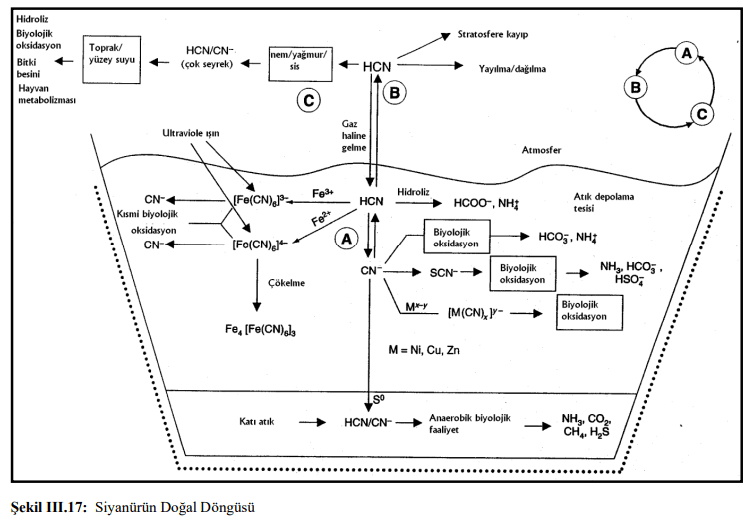
In the statement issued by the Turkish Thoracic Society on 24 July 2017, it was underlined that almost all of the substances to be used in the plant are risky for human health and ecological life. In the statement, it was stated that “While some of them (e.g. quartz-containing sand) pose a risk only for the health of workers (silica causes silicosis, is known to be carcinogenic); most of the substances have the potential to have a negative impact on the health of workers, people in the environment and ecological life.”
In the statement, it is said that even if the enterprise assumes that there will be no risk during the operation period, the existing danger will continue to exist forever as these wastes cannot be eliminated after the mine operation is terminated, “Considering the proximity of the region to the Euphrates River, it is not possible to foresee the extent of an environmental disaster that may be caused by a possible leakage and destruction risk”:
In the context of environmental health and air pollution, it is observed that the size of the environmental pollution caused by the diesel fuels to be used in the operation is also in gigantic amounts. Since the region is close to active fault lines and the water sources that feed the Euphrates River, it seems that the negative effects in the event of a runaway/disaster have the potential to affect the entire geography and ecosystem in the Euphrates River basin.”
The opinion of Prof. İsmail Duman from Istanbul Technical University (ITU) on the EIA report is similar to the other two comments:
“The acute effect of Arsen, also known as rat poison, is lethal when taken in excessive amounts. Its chronic effects are as follows: skin cancer, sensory impairment, loss of reflexes and depression, anaemia, heart failure, blood cancer, cancer of the lymphatic system, liver tumours, congenital disabilities, babies born with incomplete development, lung cancer, kidney failure and mental illness.”
The mine reportedly uses 460.65 cubic metres of water per hour. The plant also releases large amounts of carbon dioxide into the atmosphere. The report contains the following statements regarding the amount of carbon dioxide (CO2):
“At low pH levels, carbonates in the ore react with acid to release CO2. The acidification process releases large amounts of CO2 and thus less CO2 is released in the autoclave, strengthening the efficiency of oxygen utilisation in the BO unit.”
Özgür Özdemir, a lawyer who makes the programme Adalet Arası on Yeşil Gazete TV, evaluated the legal developments regarding the mine in October 2023 and also followed the Constitutional Court process. Özdemir said, “Unfortunately, the warnings of neither lawyers nor other experts were taken into consideration.”

